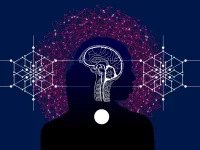Academics mostly keep to themselves. They stay in their offices or labs, and they venture out to classrooms or conferences with (hopefully) interested audiences and other people who understand their passions and frustrations. They spend months or years collecting evidence and formulating theories to be able to share them with their colleagues and advance the knowledge in their fields bit by bit, all while hidden from the general public. But what comes out of those offices, labs, and conferences has a greater impact on our lives than we imagine.
Cultural neuroscientists study how culture affects the brain and vice versa, and by the nature of their work, draw biological distinctions between different cultural groups. But the way they are approaching the comparison of different races may be promoting racist ideology. This is dangerous because when academics — particularly neuroscientists, whom we respect for understanding “the truth” about human nature — spread ideas about how different cultures are fundamentally different from each other, these ideas can trickle down to people outside of academia. This gives a pass to racist attitudes and behavior, or perhaps even more dangerously, gives racist academics a motive for rallying “evidence” and supporters in favor of these ideas. We’ve seen it before. Books have been written (many by people with graduate degrees!) about the inherent biological superiority of one culture over others, even though all humans share 99.9% of our DNA.
Cultural neuroscientists study how culture affects the brain and vice versa, and by the nature of their work, draw biological distinctions between different cultural groups.
The issue is that neuroscientists go about pursuing their interests in cultural differences without first considering if there is anything problematic with their approach. While anthropologists have pondered the most accurate definition of culture for centuries, neuroscientists with little to no background in the social sciences simply rely on their basic knowledge of nationality, race, ethnicity, and culture when they design experiments comparing one group with another. Cultural neuroscientists need to learn from anthropologists’ definitions and constructions of culture as well as the potential harmful sociopolitical effects of their findings on the general public.
Slowly, the focus of cultural neuroscientists’ studies in terms of which groups they look at has shifted over the years, but how they think about culture in the first place has not.
Cultural neuroscientists have focused largely on nationality and race as types of cultures throughout the field’s history, which arguably began in 1991 with the publication of “Culture and the Self,” a research paper that explored how Westerners (people from heavily Western European-influenced countries) and East Asians think of themselves in relation to other people. After “Culture and the Self,” “East” versus “West” comparisons did not get very much attention until a resurgence in the early 2000s. Until then, the first decade of the field was mostly concerned with tracking psychiatric disorder prevalence across nations. As neuroscientists reflected more on how to identify the effects of specific cultures on the brain, they became more deliberate with their study populations, narrowing their focus from geographically and culturally distant groups to groups just a couple of countries away from each other or within a single country. Out of this period came comparisons of races within the same country (like this study in Italy and this one in the US) and people of the same ethnicity but different nationalities.
In the past decade, numerous critiques of the ways cultural neuroscience conceptualizes culture have developed. One group, led by philosophy professor Marina Martinez Mateo at Goethe University Frankfurt and identity researcher Maurice Cabanis at Philipps-University Marburgin Germany, reviewed 40 neuroscience studies that used functional magnetic resonance imaging (fMRI) to compare activity in the brain during various psychological processes among cultures. They specifically looked at “the concepts and assumptions [of culture] used in the explanations of the studies.” Their major criticism is that current cultural neuroscience research suggests culture is biological.
Cultural neuroscientists generally don’t define culture before diving into a research study. But their methods for finding answers to their questions end up revealing their underlying beliefs, and their results confirm them.
For example, say a researcher designs a study comparing the brain activity of Black people and White people to look for cultural differences, and they do not explain how they chose those groups. That researcher is then implying that culture is based on skin color, or more broadly, one’s biology. We know this is not true. We know culture is purely socially constructed. And if the researcher finds differences between the groups, their results effectively say that Black and White people’s brains work differently, even though the truth may be that historically oppressed and historically privileged people’s brains work differently due to how oppression and privilege have influenced the social environment these groups grew up in. Cultural neuroscientists are causing major concern for some social scientists by neglecting to reflect on the social construction of culture and mistakenly choosing cultural groups based on, and reducing them to, their biological traits.
Cultural neuroscientists are causing major concern for some social scientists by neglecting to reflect on the social construction of culture and mistakenly choosing cultural groups based on, and reducing them to, their biological traits.
If we think about people from the same culture as being naturally and permanently the same as each other and different from other groups — what is called “cultural essentialism” — it is a slippery slope to discrimination. Martinez Mateo and others believe that the current state of cultural neuroscience is perpetuating a new type of racism: “… as soon as persons are reduced to their ‘cultural belongings,’ and this forms the basis for interpreting their behavior, there is no significant difference between the concept of ‘race’ and the concept of ‘culture.’”
The critics also argue that in experiments testing how people make split-second decisions about other groups based on subconscious stereotypes, neuroscientists imply that discrimination is natural and unavoidable. This is a valid criticism, but along with others, it is partially the result of a misunderstanding of how neuroscientists think about the interaction of culture and the brain.
Non-neuroscientists may not realize that social experiences literally change brain activity and consequently the structure of the brain through strengthening some brain pathways and letting others weaken. So when neuroscientists say that they found a difference in brain activity between members of different cultures or that our brains form immediate judgments about other people, it is implied that this is the result of social conditioning, not that this brain activity is the cause for cultural differences or immediate judgments. Cultural neuroscientists need to make this point clearer.
The responsibility lies with cultural neuroscientists to recognize the anthropological community, as well as the general public, as their audience and greatly increase communication with them. Additionally, as the population most affected by scientific findings which make their way into general knowledge and social attitudes, the public should not hesitate to be critical of research — even when it is written by people with advanced degrees or different expertise.
Human Brain Mapping (2013). DOI: 10.1002/hbm.22133
Frontiers in Human Neuroscience (2014). DOI: 10.3389/fnhum.2014.00728
Journal of the International Neuropsychological Society (2002). DOI: 10.1017/S1355617702813157
Psychological Review (1991). DOI: 10.1037/0033-295X.98.2.224
Neuroscience & Biobehavioral Reviews (2012). DOI: 10.1016/j.neubiorev.2011.05.006
História, Ciências, Saúde – Manguinhos (2016). DOI: 10.1590/s0104-59702016000400002
The encultured brain: an introduction to neuroanthropology. MIT Press.
The Turner Diaries, Other Racist Novels, Inspire Extremist Violence




